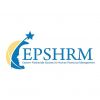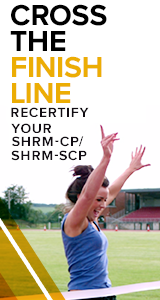Are you secure in your SECURE understanding?
On December 29, 2022, the Setting Every Community Up for Retirement Enhancement Act 2.0 (“SECURE 2.0” or the “Act”) was signed into law. An amalgamation of three previous bills, the Act covers a broad swath of topics that impact employers, plan sponsors, third-party service providers, and plan participants. The Internal Revenue Service (“IRS”) and Department of Labor (“DOL”) are still in the process of issuing guidance related to SECURE 2.0. In addition, many of these changes will require significant administrative and payroll support, so it will be important to coordinate with your plan administrative and payroll vendors prior to finalizing any decisions regarding new plan features.
Changes Effective Immediately Following Enactment
Increase of “Required Beginning Date” for Distributions to Age 73, and Later, Age 75
Effective January 1, 2023, SECURE 2.0 extended the age for the required beginning date (“RBD”) to age 73 for individuals attaining age 72 after December 31, 2022. Effective in 2033, for participants attaining age 73 after December 31, 2032, the RBD age is 75.[1]
Matching and Non-elective Contributions Allowed as Roth Contributions
As of December 29, 2022, plan sponsors were permitted to allow participants in a 401(k), 403(b), or governmental 457(b) plans to elect to receive vested employer matching and non-elective contributions on a Roth basis, as opposed to the prior rule that only allowed for pre-tax employer contributions. However, significant unanswered questions relating to tax reporting and withholding effectively prevented implementation of this new feature until the IRS released Notice 2024-2 in December 2023. The Notice resolved the major stumbling blocks, and recordkeepers are now preparing to move forward.
Rules for Use of Retirement Funds in Connection with Qualified Federally Declared Disasters
The Act provides permanent rules relating to the use of retirement funds for those impacted by a federally declared disaster that generally align with the structure of past ad hoc legislation. The rules permit up to $22,000 to be distributed penalty-free from employer retirement plans or IRAs. These distributions can be taken into gross income over three years (mitigating the tax impact of the withdrawal), and can be repaid to a plan or IRA within three years.
This section is effective for disasters occurring on or after January 26, 2021.
Revision of Prohibited Transaction Rules for De Minimis Participation Incentives
Effective beginning with the 2023 plan year, Section 113 of the Act revises the prohibited transaction rules under ERISA and the Code to allow employers to provide de minimis financial incentives not to exceed $250 in value, such as low value gift cards, to encourage participants to contribute to their 401(k) or 403(b) plans.
Self–Certification of Hardship
The Act provides that beginning in 2023, participants can self-certify that they have had an event that constitutes a hardship, that the amount does not exceed the amount needed for the hardship and that there are no other available sources upon which the participant can draw to fund the hardship-related expenses.
Eliminating Intermittent Notice Requirements for Unenrolled Participants
The Act eliminates most notices for individuals who are eligible to participate in defined contribution plans but have not enrolled, as long as those individuals have received a copy of the summary plan description and other required notices related to initial eligibility..
Early Distribution for Individuals with Terminal Illness
The Act creates an exception to the 10% early withdrawal tax on distributions made to a terminally ill individual. A terminally ill individual is someone who has been certified by a physician as having an illness or physical condition that can be reasonably expected to result in death 84 months or less after the date of the physician’s certification. If a plan does not provide for terminally ill individual distributions, participants may nonetheless treat otherwise-permissible in-service distributions (e.g., an age 59½ withdrawal) as terminally ill individual distributions on their tax returns to claim the tax benefits. This section is effective for distributions made after December 29, 2022.
Required Minimum Distribution Failure Penalty Tax Reduced
Prior to SECURE 2.0, failures by an individual to take minimum distributions were subject to a 50% excise tax. Under the Act, the tax is reduced to 25%. If a failure to take a required minimum distribution is corrected within the “correction window,” the tax is reduced to 10%. This provision applies to tax years beginning after December 29, 2022.
Repayment of Qualified Birth or Adoption Distribution Limitation
The SECURE Act allowed for recontribution of qualified birth or adoption distributions (“QBADs”) to a retirement plan at any time. The Act amends the QBAD provision to restrict the recontribution period to three years (which is generally the time period during which the tax year of the distribution would remain open). This change is effective for distributions made after the December 29, 2022, and requires any repayment of distributions prior to that date to be completed before January 1, 2026.
IRS Guidance on SECURE 2.0 Retirement Changes (natlawreview.com)
A Closer Look at the Emergency Savings Provisions in SECURE 2.0 | PLANSPONSOR
Commentary by: Raylea Stelmach
Edited by:
EPSHRM provides content as a service to its readers and members. It does not offer legal advice, and cannot guarantee the accuracy or suitability of its content for a particular purpose.







